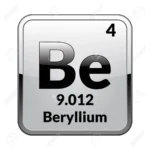
Calcium plays a very important role in many bodily functions. This helps build healthier, thicker bones and keeps bones healthy later in life. It also helps with nerve electrocution and muscle contraction. In the heart, calcium is a mineral that plays an important role in heart contraction. 99% of the calcium in the body is stored in bones and teeth.
Calcium is the fifth most abundant element in the Earth’s crust (after oxygen, silicon, aluminum and iron).
In order for people to absorb calcium, we need a special vitamin = vitamin D. Without vitamin D, we can drink milk or take as much calcium supplement as we want – we can’t use it!
Calcium is the fifth most common dissolved ion in seawater (after sodium, chloride, magnesium, and sulfate).
Calcium isn’t just used for making healthy bones! It is used in the manufacture of cement, cheese, and the removal of non-metals from various alloys (called alloys) and is also used as a tool in the manufacture of other metals.
Calcium is the fifth most abundant element in the human body (after oxygen, carbon, hydrogen and nitrogen).
Pure calcium is actually a metal and reacts very violently, sometimes violently (explosively) with water and acids.
According to Chemicool, calcium compounds are contained in various minerals, including limestone (calcium carbonate), gypsum (calcium sulfate), and fluorite (calcium fluoride).
Calcium has been known for thousands of years. The name calcium comes from the Latin word “calcis” which means “lime”. The Romans were known to produce lime from calcium oxide from mines.
Calcium makes up about 4.2 percent by weight of the Earth’s crust.
Although calcium has been known for thousands of years, it wasn’t until 1808 that Sir Humphrey Davy of England purified it and identified it as an element.
To isolate pure calcium, it must be extracted via electrolysis, a technique that uses a constant electric current to separate elements from their natural source.
The best sources of calcium in food are milk, yogurt and cheese. Nearly 72% of calcium in the United States comes from dairy products.
Calcium (Ca) is number 20 on the Periodic Table of the Elements and appears just below Magnesium in the same column (Group IIA) as other alkaline earth metals (a group of metals that are more chemically reactive than most metals).
Several other foods also contain good amounts of calcium, especially calcium fortified foods. These include calcium-fortified orange juice, calcium tofu, green beans, white beans, almonds, bok choy, rhubarb, kidney beans, and broccoli.
Calcium comes from the Latin “calx” which means lime.
Cows in the United States can produce an average of 6 liters of milk per day. This means that each cow can provide more than 100 glasses of milk a day!
Melting point for calcium: 842 degrees Celsius.
Calcium plays a major role in muscle contraction, helps send messages through nerves, and also acts in releasing hormones. When calcium levels are low, the body steals calcium from bones to cover up the difference.
Boiling point for calcium: 2,483 ° F (1,484 ° C).
Calcium builds the sturdy outer structure of the bones in the human body and gives them strength. The insides of the bones are very spongy and hollow, which makes the bones very light.
If turtles don’t have enough calcium in their blood, they can develop a condition called metabolic bone disease, known as soft shell syndrome.
In humans, the glands that are responsible for regulating calcium are called parathyroid glands and are located around the thyroid gland in the neck. The parathyroid glands regulate calcium in the blood so well that calcium levels usually only vary by 1-2%!
Many nutritionists recommend a 2: 1 ratio of calcium to magnesium. Although our bodies need more calcium, we are actually more likely to become magnesium deficient.
Although the largest place for calcium found in the body is in bone, calcium is also in cartilage – the softer connective tissue between the various joints, ears, nose, and chest.
Calcium carbonate is the active ingredient in many antacids such as tums and rolaids.
The reason doctors can take pictures of bones is because of calcium. Calcium does not release certain energy called x-rays, so it looks bright white on film.
Calcium compounds are widespread in the manufacture of building materials. The plaster of Paris is made of plaster of Paris or calcium sulfate, like “Paris plaster”, a thick white powder that hardens into a cast when mixed with water and breaks bones.









